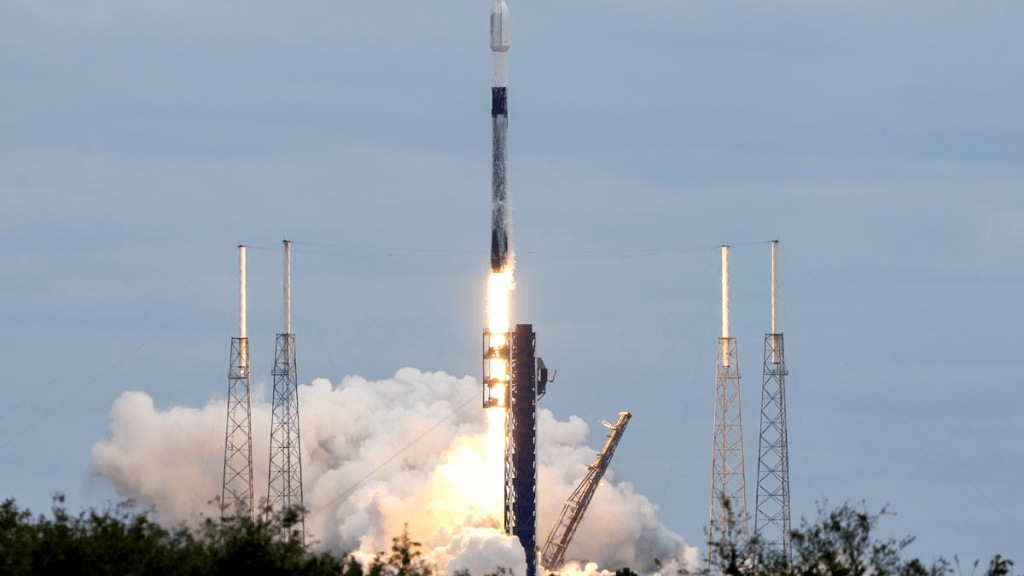India’s most advanced communications satellite, GSAT-20 or GSAT N-2, successfully lifted off into space aboard a SpaceX Falcon 9 rocket from Cape Canaveral, Florida, at one minute past midnight on Tuesday. This marked a significant milestone for the Indian Space Research Organisation (ISRO), which partnered with Elon Musk’s SpaceX for the first time through its commercial arm, New Space India Limited (NSIL).
GSAT-20 to Revolutionize Broadband and In-Flight Connectivity
The 4,700 kg satellite, GSAT-20, is set to transform broadband services across remote areas and provide in-flight Internet for passenger aircraft. It embarked on a 34-minute journey aboard the Falcon 9, a partially reusable two-stage rocket capable of lifting up to 8,300 kg to geosynchronous transfer orbit. The rocket’s first stage was successfully recovered on a drone ship in the Atlantic Ocean, marking SpaceX’s 371st successful recovery.
Radhakrishnan Durairaj, Chairman and Managing Director of NSIL, confirmed the mission’s success. “GSAT-20 got a very precise orbit,” he said from Cape Canaveral. ISRO Chairman Dr. S Somanath added from the UR Rao Satellite Center in Bengaluru, “The satellite is healthy, solar panels are deployed, and the mission life is 14 years. The ground infrastructure is ready to support GSAT-20.”
The satellite uses only the advanced Ka band frequency, offering higher bandwidth between 27 and 40 GHz. Experts highlight that a dedicated Falcon 9 launch costs around $70 million. The Master Control Facility in Hassan has now taken charge of GSAT-20, which will be raised to its final position, 36,000 kilometers above India, in the coming days. Falcon 9’s record of 396 launches with a 99% success rate underscores the reliability of the mission.


